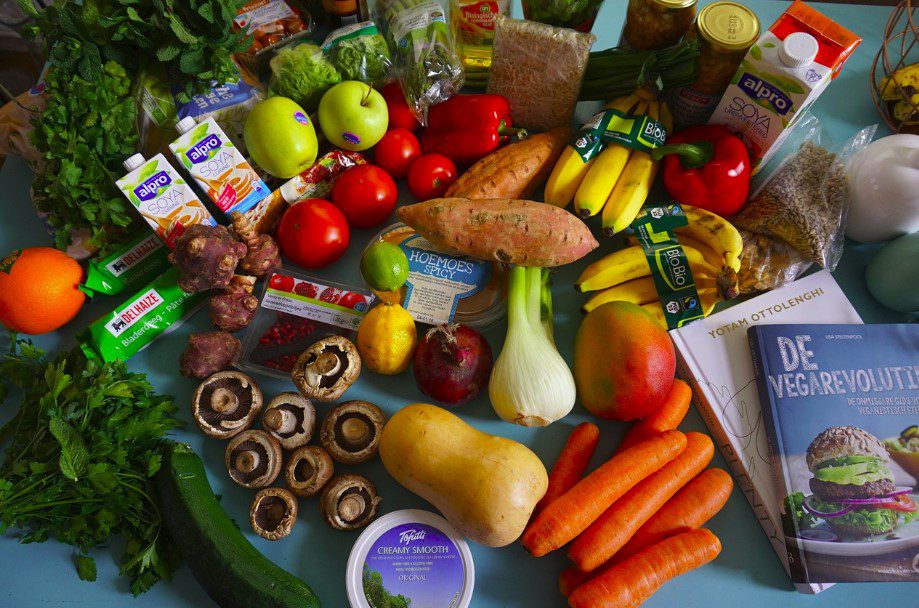Oxidative stress is a term often thrown around in the circles of health and wellness. The general perceived concept is that oxidative stress is a physiological process that contributes to aging of cells and the development of several health conditions in adults and children.
It is actually a common denominator in various age-related diseases. These include heart disease, cancer, and neurodegenerative disorders, which can affect multiple generations.
Understanding oxidative stress is of paramount importance for family health. It provides valuable insights into how lifestyle choices, genetics, and environmental factors can influence the well-being of both parents and children.
By understanding its impact, families can make informed decisions about nutrition, exercise, and other lifestyle factors to reduce their risk of developing these conditions.
Exactly What is Oxidative Stress?
Simply put, oxidative stress is a physiological condition that occurs when there’s an imbalance between the production of free radicals or reactive oxygen species (ROS) and the body’s ability to counteract or neutralize their harmful effects.
It is an imbalance of free radicals and antioxidants in the body, can lead to cell and tissue damage.
MedicalNewsToday
In simpler terms, it’s a situation where the body’s natural antioxidant defenses cannot keep up with the damage caused by free radicals. Oxidative stress occurs naturally and plays a role in the aging process.
But first, what are free radicals and antioxidants?
… free radicals
Free radicals are unstable molecules or atoms that have unpaired electrons. Because of this unpaired electrons, they are highly reactive and seek to bond with other molecules in your body. In doing so, they can cause damage to cells, proteins, and even DNA.
Free radicals are produced naturally in the body during processes like metabolism and are also generated when the body is exposed to external environmental factors like pollution, radiation, and certain chemicals such as cigarette smoke.
While free radicals have essential roles in the body, such as in the immune system’s defense against pathogens, they can become harmful when their levels become excessive.
… antioxidants
Antioxidants on the other hand, are the superheroes of the body’s defense system. They are substances that can neutralize and counteract the harmful effects of free radicals. As mentioned above, free radicals are unstable molecules that can damage body cells, proteins, and DNA.
Antioxidants have the power to stabilize these unruly radicals by providing them with the electrons they’re missing. This essentially prevents them from multiplying in numbers.
Antioxidants come in various forms, such as
- vitamins (like vitamin C and E)
- minerals (like selenium)
- enzymes (such as superoxide dismutase)
When we consume a diet rich in antioxidant-containing foods, our bodies gain the strength to combat the destructive forces of free radicals. This promotes the overall health and well-being of the body.
What Leads to Oxidative Stress?

Oxidative stress in both adults and children can result from a variety of factors and processes in our daily lives. Here are some of the primary culprits that lead to oxidative stress:
- Metabolism: Normal metabolic processes in the body, such as the breakdown of food for energy, produce free radicals as byproducts. These free radicals can initiate oxidative stress.
- Environmental Toxins: Exposure to environmental factors like air pollution, cigarette smoke, and radiation can introduce additional free radicals into the body.
- Inflammation: Chronic inflammation, which can be triggered by infections or ongoing health conditions, can release more free radicals.
- Poor Diet: Consuming a diet high in unhealthy fats, sugars, and processed foods can increase oxidative stress. These foods can contribute to inflammation and the production of free radicals.
- Alcohol and Drugs: Excessive alcohol consumption and certain drugs can generate free radicals in the body, increasing oxidative stress.
- Psychological Stress: Chronic stress can also lead to oxidative stress. It triggers the release of stress hormones and the production of free radicals.
- Excessive Exercise: While regular exercise is generally beneficial, extreme and prolonged physical activity can temporarily increase oxidative stress. However, the body’s antioxidant defenses usually adapt to handle this.
- Ultraviolet (UV) Radiation: Overexposure to UV radiation from the sun can damage skin cells and lead to oxidative stress. This is why sunscreen and protection from UV rays are important.
- Infections: Certain infections, especially those that cause chronic inflammation, can contribute to oxidative stress.
- Medications: Certain medications including some NSAIDs, chemotherapy drugs, antibiotics, antipsychotic medications, statins, antidepressants, acetaminophen, and specific birth control pills, can lead to the imbalance between free radicals and antioxidants.
- Aging: The aging process itself is associated with an increase in oxidative stress. This body’s ability to neutralize free radicals may decline with age.
The Impact of Oxidative Stress on Adults and Children:

1. Adults
The impact of oxidative stress on the human body can be quite profound. Oxidative stress, which results from an imbalance between the production of free radicals and the body’s ability to neutralize them with antioxidants, can lead to several negative consequences:
Cellular Damage: Oxidative stress can harm the cells in your body, including DNA, proteins, and lipids. Over time, this damage can accumulate and contribute to a range of health issues.
Aging Process: Oxidative stress is closely associated with the aging process. The cumulative effects of free radical damage can accelerate signs of aging, such as wrinkles, reduced skin elasticity, and the onset of age-related diseases.
Disease Risk: Research has linked oxidative stress to various diseases, including cancer, heart disease, and neurodegenerative disorders like Alzheimer’s and Parkinson’s. Free radicals can trigger and worsen these conditions.
Inflammation: Oxidative stress can trigger inflammation, a common factor in many chronic diseases. Chronic inflammation can lead to tissue damage and dysfunction in various organs.
Immune System Weakening: Excessive oxidative stress can weaken the immune system, making the body more susceptible to infections and other health issues.
Metabolic Disorders: Oxidative stress can disrupt metabolic processes, potentially leading to conditions like diabetes and obesity.
Neurological Effects: The brain is particularly vulnerable to oxidative stress due to its high oxygen consumption. It’s believed to play a role in the development of neurodegenerative diseases.
Cardiovascular Issues: Oxidative stress can contribute to heart disease by causing inflammation and oxidative damage to blood vessels and the heart muscle.
2. Children
It’s not just your health at stake – oxidative stress can affect your child too, especially during pregnancy.
Pregnancy Complications: High levels of oxidative stress during pregnancy can increase the risk of complications, including preterm birth, preeclampsia, and developmental issues in the child.
Developmental Consequences: Oxidative stress can affect a child’s development, potentially leading to cognitive and behavioral problems. Ensuring a healthy, balanced diet rich in antioxidants during pregnancy is crucial for the well-being of both mother and child.
How to know you have a real challenge with oxidative stress
Recognizing that you have a genuine challenge with oxidative stress can be essential for managing your health. Here are some signs and symptoms that may indicate an issue with oxidative stress:

- Frequent Fatigue: Persistent tiredness and low energy levels can be an early sign of oxidative stress. Oxidative damage to cells can affect overall energy production.
- Chronic Inflammation: If you experience chronic inflammation or have a medical condition associated with ongoing inflammation, it may be a sign of oxidative stress.
- Skin Issues: Premature aging of the skin, such as the development of wrinkles, fine lines, and age spots, may be linked to oxidative stress.
- Cognitive Decline: If you notice cognitive issues like memory problems, difficulty concentrating, or brain fog, oxidative stress may be a contributing factor, especially in cases of neurodegenerative diseases.
- Muscle Weakness: Weakness and muscle fatigue that persist despite regular exercise and a balanced diet can be a sign of oxidative stress affecting muscle cells.
- Susceptibility to Illness: Frequent infections or a weakened immune system can be an indicator of oxidative stress since it can affect immune function.
- Chronic Health Conditions: Many chronic health conditions, such as cardiovascular disease, diabetes, and autoimmune disorders, are associated with oxidative stress.
- Pain and Discomfort: Persistent pain, especially in joints and muscles, can sometimes be associated with oxidative stress-induced inflammation.
- Gastrointestinal Issues: Digestive problems and gastrointestinal discomfort can be linked to oxidative stress due to the potential for oxidative damage to the gastrointestinal lining.
- Mood Disorders: Oxidative stress may contribute to mood disorders like depression and anxiety due to its potential effects on brain function.
How to Mitigate Oxidative Stress in Children

Now that we’ve explored the impact of oxidative stress, it’s crucial to understand how you can mitigate its effects. Here are some actionable steps to consider:
Antioxidant-Rich Diet
Consuming a diet rich in antioxidants is a key strategy to combat oxidative stress. Include a variety of fruits and vegetables in your daily meals to boost your body’s defense mechanisms.
Regular Exercise
Engaging in regular physical activity can help your body adapt to oxidative stress. Exercise prompts your body to produce its own antioxidants, strengthening its resilience.
Stress Management
Chronic stress can exacerbate oxidative stress. Incorporating stress-reduction techniques like meditation, yoga, and mindfulness can have a positive impact on your overall well-being.
Avoiding Toxins
Minimize exposure to environmental toxins, such as air pollution and cigarette smoke. These toxins can increase oxidative stress in your body.
Grounding/Earthing
Grounding, or earthing, involves making direct contact with the Earth’s surface, like walking barefoot on soil or grass. It’s believed to reduce oxidative stress by transferring electrons from the Earth to the body, acting as antioxidants. While some studies suggest potential benefits, scientific evidence is limited and mixed.
Supplements
In some cases, supplements may be necessary to support your body’s antioxidant defenses. Consult with a healthcare professional to determine the right supplements for your specific needs.
And finally
Oxidative stress is an essential aspect of your health and that of children, and it should not be underestimated. It affects the health of children, especially during pregnancy.
By understanding the causes and consequences of oxidative stress and taking proactive steps to mitigate its effects, you can lead a healthier, more vibrant life.





Leave a Reply